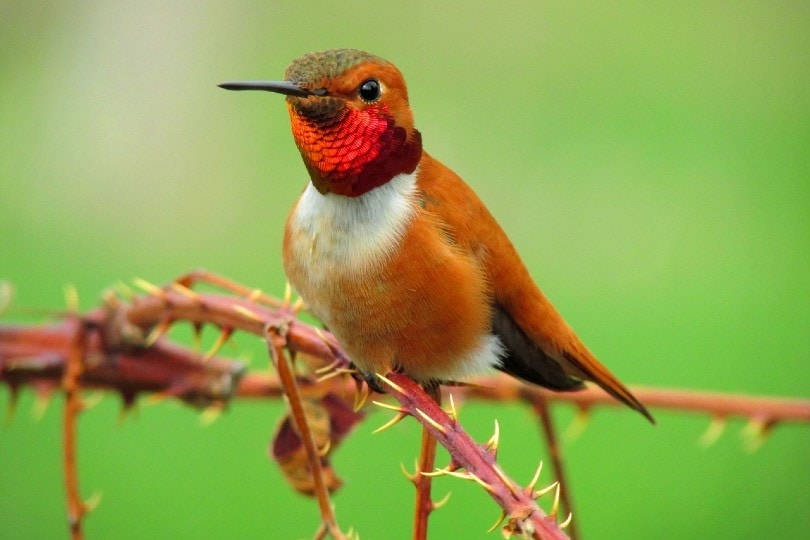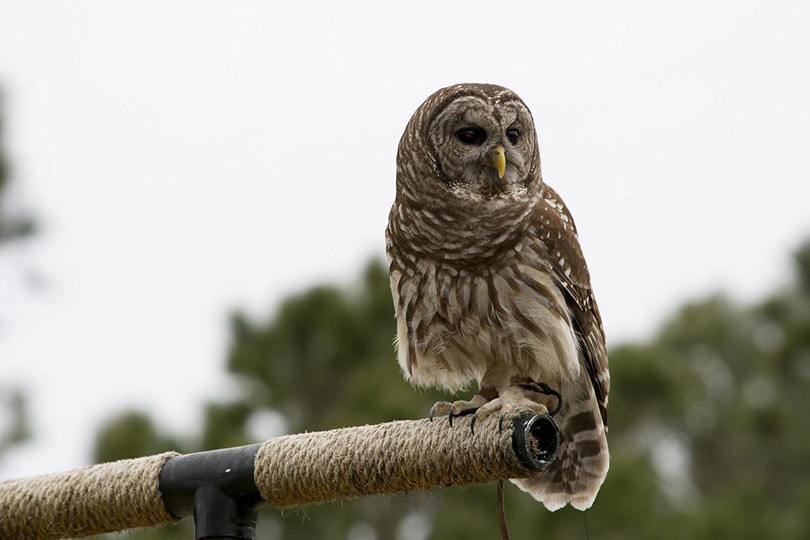Do Birds Blink? What You Need To Know
Last Updated on

If you’re a bird lover, you’ve probably spent a lot of time watching and admiring them. How often do you see a bird blink, though? Do birds blink?
The answer is yes—but not like how you’re probably thinking. Birds blink differently from how we blink, so you likely won’t even notice they’re doing it. Bird species also have different rates1 of blinking, so you’ll find that some species barely blink at all while others blink much more often.
Read on to find out just how birds blink and how it differs from how we blink!

The Nictitating Membrane
If you own pets other than birds, like cats or reptiles, you might’ve noticed that they have an “eyelid” that moves not vertically but instead horizontally. Honestly, this eyelid can be a little creepy when you see it! This so-called “third eyelid” is known as the nictitating membrane2. The name comes from the word “nictate,” which means “blink”. Birds also have this membrane.
The upper eyelid doesn’t really move in most birds, just their lower one. They use this lower eyelid to close their eyes for sleep rather than blinking, though. (However, the owl is an exception as its upper eyelid can move and is used in blinking.) But blinking is done with the nictitating membrane for most birds.

How Is the Nictitating Membrane Used?
This membrane is super thin—nearly translucent—and has various uses across species. When it comes to birds, the nictitating membrane primarily works to keep the cornea from drying out, as well as to push out dust and dirt from the eye, which is similar to how blinking works in humans.
It can be used in other ways, too, though, depending on the type of bird with which you’re dealing. For example, crows will use the membrane for displays, while aquatic birds will use it as a goggle of sorts. Other birds close the membrane when feeding their babies so as to protect their eyes. Still, others will keep them closed to keep their eyes safe while attacking prey.
One of the most common times birds make use of the nictitating membrane is when they are moving their heads around. This is because engaging the nictitating membrane more often while doing so can help block out any blurriness from the movement. Smaller birds can actually blink so quickly during head movement that it would be too fast for us to see!
In Conclusion
As you can see, birds do blink; it’s just that the way they blink is different from the way we blink. Instead of having upper and lower eyelids that close, most birds will blink using the nictitating membrane—a so-called “third eyelid” that moves horizontally across the eye from the edges rather than vertically. This membrane can be engaged for several other reasons, too. Some of the reasons birds use their nictitating membrane are for protecting the eye from damage during hunting or feeding or when they go underwater.
You’ll likely find birds blinking most often as they turn their heads, as blinking can help prevent images from becoming blurry. You’ll also find that bird species have different rates of blinking, with some blinking much faster than others!
Featured Image Credit by: Avia5, Pixabay
About the Author Misty Layne
Misty Layne lives out in the woods in small-town Alabama with her two cats. She also has an array of stray cats, raccoons, and possums who like to call her front porch home. When she’s not writing about animals, you’ll find her writing poetry, stories, and film reviews and is excited to share her knowledge with you all. In her free time, Misty enjoys chilling with her cats, playing piano, watching indie and foreign films.
Related Articles:
Can You Use Binoculars to Look At Stars? How to Choose the Right Pair
10 Types of Hummingbirds in Arkansas (With Pictures)
8 Types of Hummingbirds in Nebraska (With Pictures)
5 Types of Hummingbirds in Idaho (With Pictures)
3 Types of Hummingbirds in Mississippi (With Pictures)
8 Types of Hummingbirds in Kansas (With Pictures)
5 Types of Hummingbirds in West Virginia (With Pictures)
5 Types of Hummingbirds in Ohio (With Pictures)
